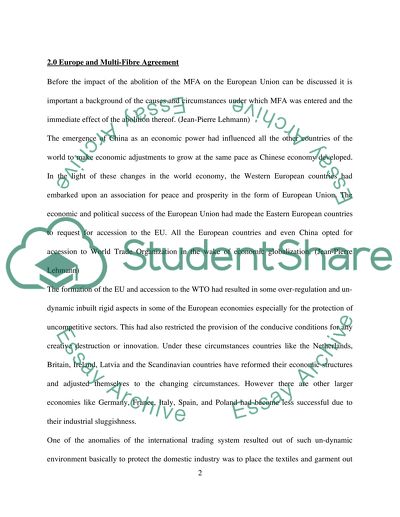Cite this document
(“Cessation of Multi-Fibre Agreement Impact on Free Trade Essay”, n.d.)
Retrieved from https://studentshare.org/miscellaneous/1515031-cessation-of-multi-fibre-agreement-impact-on-free-trade
Retrieved from https://studentshare.org/miscellaneous/1515031-cessation-of-multi-fibre-agreement-impact-on-free-trade
(Cessation of Multi-Fibre Agreement Impact on Free Trade Essay)
https://studentshare.org/miscellaneous/1515031-cessation-of-multi-fibre-agreement-impact-on-free-trade.
https://studentshare.org/miscellaneous/1515031-cessation-of-multi-fibre-agreement-impact-on-free-trade.
“Cessation of Multi-Fibre Agreement Impact on Free Trade Essay”, n.d. https://studentshare.org/miscellaneous/1515031-cessation-of-multi-fibre-agreement-impact-on-free-trade.


